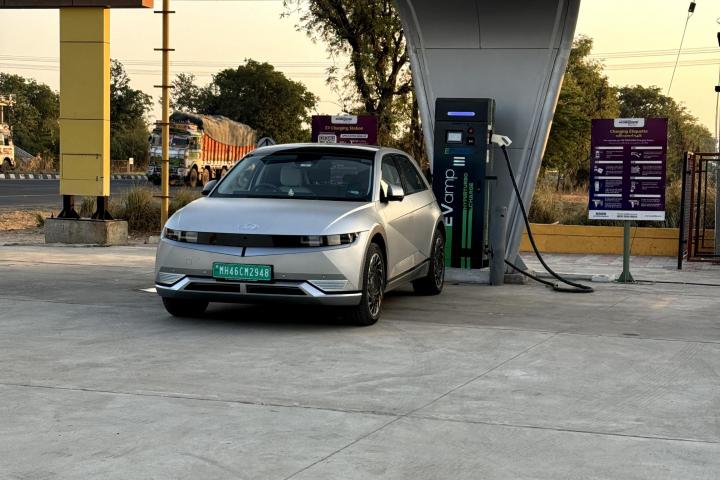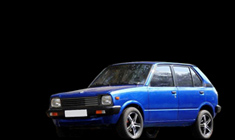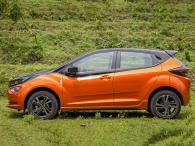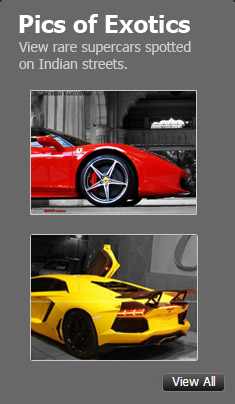News
Took the Ioniq 5 on a road trip instead of my BMW: Overall experience
While the BMW might have saved some time, the fuel costs would have easily surpassed 30-35k.
BHPian Ashutosh_kumar recently shared this with other enthusiasts.
Have been wanting to write about this for a while now. Everyone says long-distance travel with an electric car is a major hassle. Ever since we bought our Hyundai Ioniq, we wondered: could it handle the dusty roads of Rajasthan? There was only one way to find out – take the plunge and embark on a road trip. In the first week of January, we planned a 3,000+ km adventure, starting from Panvel to Jodhpur. We then went from Jodhpur to Jaisalmer and back, Jodhpur to Bikaner, Bikaner to a remote village 160 km away & back, Bikaner to Peepasar and back, and finally, Peepasar to Jodhpur, concluding with the journey back to Panvel.
Here's the outline of trips:
We left home at 3 am and reached Jodhpur by 10 pm. Usually, our X1 takes us from 5 pm to 10 pm, so the Ioniq added only two hours to the travel time.
Our first charging stop was at Jio-BP Bharuch 60 kW. We were the only ones there,charged for an hour, and then continued our journey.
The next stop was Palanpur - Mobilane 80 kW. Upon arrival, a BYD E6 was charging, and a Tiago EV pulled in right before us. We politely asked the Tiago driver if he could use the nearby Palanpur Tata EV Charger 30 kW, but he refused. Frustrated, we went back to the Jio-BP 60 kW charger 10 km away and started charging. After 10 minutes, another Tiago EV arrived and started charging. By then, the Mobilane app showed one charger available, so we went there to charge at 80 kW. Thankfully, the BYD left soon after, and we charged at full speed. This whole ordeal delayed us by over an hour. Remember, when a charger has two plugs, if only one is used at a time, it charges at full speed. If both are in use, the speed halves.
Back in Jodhpur, we charged the Ioniq at home using a regular 3-pin socket. It charged at a glacial 2.8 kW, taking a whopping 25-26 hours for a full charge. We realized the impact of temperature here – Jodhpur's January maximum temperature was a chilly 10-11 degrees Celsius, significantly affecting the range.
The journey to Bikaner was uneventful. However, at home, the Ioniq was only charging at 1.8 kW. Frustrated, we went to the nearby Tata 30 kW charger, but another vehicle, an XUV 400, was already charging. We waited for them to finish and then plugged in our car. It took nearly two hours to fully charge. The same scenario played out after returning from another 320 km trip – another occupied charger, another wait,another two hours lost. In Peepasar, the situation was even worse, with a charging speed of a mere 1 kW at home. I had to go to the Tata 25 kW in Suratgarh, but upon arrival, the charger was offline due to a power outage. An hour later, the charger finally sputtered to life, and after another two hours i went home.
The return leg from Peepasar to Jodhpur was smooth, with no need to charge.
However, on the way back to Panvel, we decided to push further and reach Ahmedabad to charge. We wanted to find a charger near good food options, as most of our previous stops lacked decent eateries. We located a Mobilane charger close to Ghee Gud, a popular Gujarati restaurant. Upon arrival, we found a Tiago and an E-Tron already charging, both having arrived just before us. Plugshare and Jio apps indicated a 60 kW Jio Charger 10 minutes away, but after multiple attempts and unhelpful customer care, we ended up at another Mobilane charger nearby, which was completely non-functional, and customer care was again useless. After nearly an hour wasted, we returned to the original charger, waited another 10 minutes (thankfully, the Tiago left), and finally got a decent charge. Soon after, the E-Tron also left.
Our initial plan was to reach Panvel that day, but this charger fiasco forced us to seek hotel accommodation in Surat, I prefer not to navigate at night. We charged the Ioniq using their 3-pin socket and left early the next morning,finally reaching home.
While the overall trip was satisfactory, the stark contrast to our usual BMW journeys was evident. While the BMW might have saved some time, the fuel costs would have easily surpassed 30-35k. In comparison, our entire charging expense for the trip was a mere 6k, coupled with a 10k hotel stay due to the charger debacle.
Fast forward to April, another family function beckoned. This time, we were all set to take the BMW. But two days before the trip, dad said will everyone fit in X1? Why not take the Ioniq again? This time, we decided to adopt a more relaxed approach, cruising at a comfortable 100 kmph and incorporating frequent charging breaks.
Leaving at 5 am, we hit the Mumbai-Ahmedabad highway. The once smooth stretch was now a construction zone,significantly delaying our progress. We finally crossed Vapi by 10 am and charged at the Panoli Jio-BP outlet. As fate would have it, after 30-35 minutes, a Tiago EV arrived, halving our charging speed. We politely requested the driver to wait 5 minutes or use the nearby 30 kW charger 5 minutes away, as 5 minutes would bring the Ioniq close to 80% charge. His response was a curt refusal. With a 77% charge, reaching the Palanpur Mobilane charger seemed unlikely.
After some quick online research, we found a Mobilane charger 80 kW just after exiting the Ahmedabad expressway. The family enjoyed lunch while I, along with my dog Coco, waited in the car. Backing up to reach the charger proved a bit tricky due to the slope and the Ioniq's undercarriage, & we scrapped. In 45 minutes, the car was fully charged, and we were back on the road, maintaining good speeds until Palanpur. Thankfully, the Mobilane 80 kW charger was free, allowing us a quick top-up while Coco took care of his business. We reached home by 10 pm.
The next leg involved a visit to Jaipur, a wedding in a remote village with barely-there roads, and finally, the return journey to Jodhpur. This entire trip was far more comfortable and well-planned compared to the previous one & another where we crossed 3000 kms.
Tips for a Smooth Ride:
- Embrace the (Developing) Network: While the charging network isn't yet robust, especially on expressways, route planning with backup options is crucial.
- Frequent Charging Breaks are Your Friend: Long-distance EV travel is absolutely possible with careful planning and frequent charging breaks, allowing you to maintain a comfortable cruising speed.
- Temperature Takes its Toll: Be prepared for the significant impact of extreme temperatures on your EV's range.Factor this into your planning, especially during harsh winters or scorching summers.
- An Extended Cable is Your Savior: Carrying an extended charging cable proved invaluable for home charging and situations where standard cables fell short.
- Maintain a Buffer: Always have at least 10% of your range remaining as a buffer. This ensures you can reach the next charger in case of unforeseen circumstances.
- Expressways Lack Charging Infrastructure: Be prepared for limited or even absent charging options on expressways like Bharatmala, Samruddhi, or the Bharuch to Ahmedabad section.
- While the trips weren’t without its frustrations, it proved that long-distance EV travel in India is not just possible, but also surprisingly enjoyable with the right planning and a positive attitude. As the charging infrastructure continues to evolve, these journeys will become even more seamless and pave the way for a future where electric vehicles seamlessly conquer the vast landscapes of our nation.
As for Ioniq, we couldn't have made a better choice, it's extremely Spacious & comfortable, we were Five Adults, One Baby & One Dog all seated comfortably.
I leave you with some pics:



Read BHPian comments for more insights and information.














_5.jpg)




